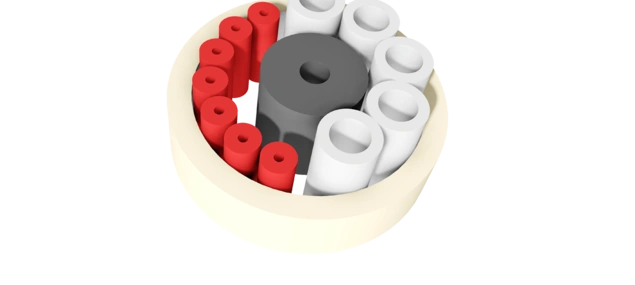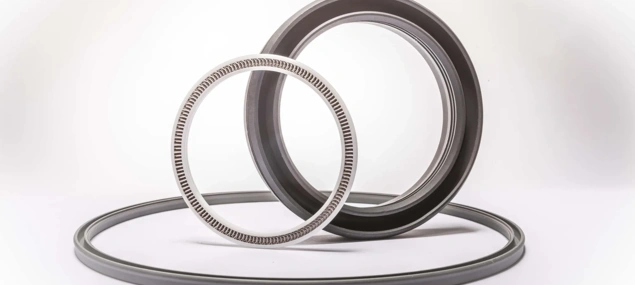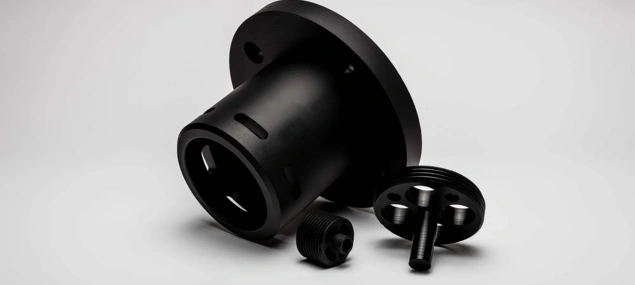Press and sintering technology
The semi-finished products are manufactured with appropriate allowances. These allowances are set such that as little waste as possible is produced during machining while at the same time ensuring that the finished part contour can be manufactured without problems. PTFE CC GmbH has a narrowly graded tools park to achieve an optimal ratio between the dimensions of the semi-finished product and that of the finished component. Due to the varying materialrelated shrinkage that occurs (there are marked differences between pure PTFE, modified PTFE and PTFE com-pounds), slight variances in the dimensions of the semi-finished products are possible even when working with the same tool dimensions. For this reason, we do not work with semi-finished listings, but adapt the dimensions of the semi-finished product to your finished product dimensions.
PTFE owes its extremely high melt viscosity (approx. 1011 to 1012 Pa x s) to a high molecular weight. Therefore, even if PTFE from a purely chemical point of view actually belongs to the thermoplastics product group, it is in reality a sintered material that cannot be processed using the typical thermoplastic processing techniques such as injection molding or blow molding. It also cannot be welded using standard thermoplastic welding methods. With special press and sintering techniques, simple geometric semi-finished forms such as solid rods, hollow rods and sheets can be manufactured. The PTFE material is mechanically compacted at forming pressures between 120 and 700 bar. The further processing of these blanks, also called “green compacts”, then follows in special sintering furnaces. In these furnaces, the material is then finished sintered under precisely defined sintering programs which depend on the material and fillers and also the wall thickness. The sintering temperature lies between 360 and 380 °C. When the crystallization melting point is reached at about 342 °C, the PTFE turns into an amorphous state and the previously compressed powder particles sinter together to form a homogenous structure. Even after the melting or gel point is reached, the sintering of the pressed parts is “free-form”, since the gel stability of PTFE is very high given the high molecular weight.
Semi-finished parts are manufactured by extrusion
During a process called RAM extrusion, a periodically acting punch presses the PTFE powder batchwise through a heated tube. The pressing force required for the compression is realized by wall friction or, additionally, by a brake. Several heat zones along the extrusion tube and a special temperature profile ensure that the PTFE rod is sintered through fully. The design is generally subject to the shape of the extrusion cylinder. For example, when a tube is manufactured, a mandrel is used to form the inner diameter. Using RAM extrusion, rod-shaped semi-finished prod-ucts (solid rods, hollow rods, tubes) are manufactured quasi-continuously and economically.




